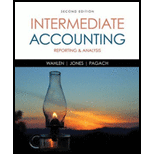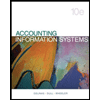
1. (a)
Elaborate the meaning of the term cost as used for financial reporting in conformity with GAAP and also explain the different characteristics of the terms and their connections and other dissimilar items.
1. (b)
Elaborate the meaning of the term expense as used for financial reporting in conformity with GAAP and also explain the different characteristics of the terms and their connections and other dissimilar items.
1. (c)
Elaborate the meaning of the term loss as used for financial reporting in conformity with GAAP and also explain the different characteristics of the terms and their connections and other dissimilar items.
2.
Categorize each of the following items as a cost, expense, loss, or other category, and also elaborate the manner in which the classification of each item may change.
Trending nowThis is a popular solution!

Chapter 5 Solutions
Intermediate Accounting: Reporting and Analysis
- Corvex Industries had sales of $620 million last year, and its production facility operated at 80% of capacity. The actual amount of fixed assets was $250 million. What total amount of fixed assets will Corvex need if it plans to increase sales by 30%?arrow_forwardI need help with this financial accounting problem using proper accounting guidelines.arrow_forwardCan you help me with General accounting question?arrow_forward
 Intermediate Accounting: Reporting And AnalysisAccountingISBN:9781337788281Author:James M. Wahlen, Jefferson P. Jones, Donald PagachPublisher:Cengage Learning
Intermediate Accounting: Reporting And AnalysisAccountingISBN:9781337788281Author:James M. Wahlen, Jefferson P. Jones, Donald PagachPublisher:Cengage Learning Auditing: A Risk Based-Approach (MindTap Course L...AccountingISBN:9781337619455Author:Karla M Johnstone, Audrey A. Gramling, Larry E. RittenbergPublisher:Cengage Learning
Auditing: A Risk Based-Approach (MindTap Course L...AccountingISBN:9781337619455Author:Karla M Johnstone, Audrey A. Gramling, Larry E. RittenbergPublisher:Cengage Learning- Principles of Accounting Volume 1AccountingISBN:9781947172685Author:OpenStaxPublisher:OpenStax College
 Auditing: A Risk Based-Approach to Conducting a Q...AccountingISBN:9781305080577Author:Karla M Johnstone, Audrey A. Gramling, Larry E. RittenbergPublisher:South-Western College Pub
Auditing: A Risk Based-Approach to Conducting a Q...AccountingISBN:9781305080577Author:Karla M Johnstone, Audrey A. Gramling, Larry E. RittenbergPublisher:South-Western College Pub Pkg Acc Infor Systems MS VISIO CDFinanceISBN:9781133935940Author:Ulric J. GelinasPublisher:CENGAGE L
Pkg Acc Infor Systems MS VISIO CDFinanceISBN:9781133935940Author:Ulric J. GelinasPublisher:CENGAGE L





